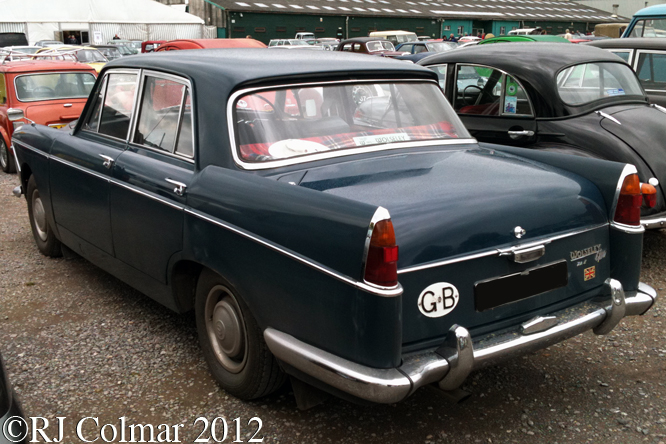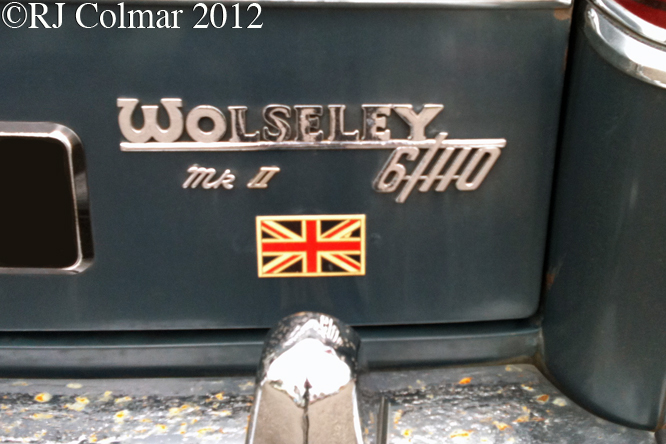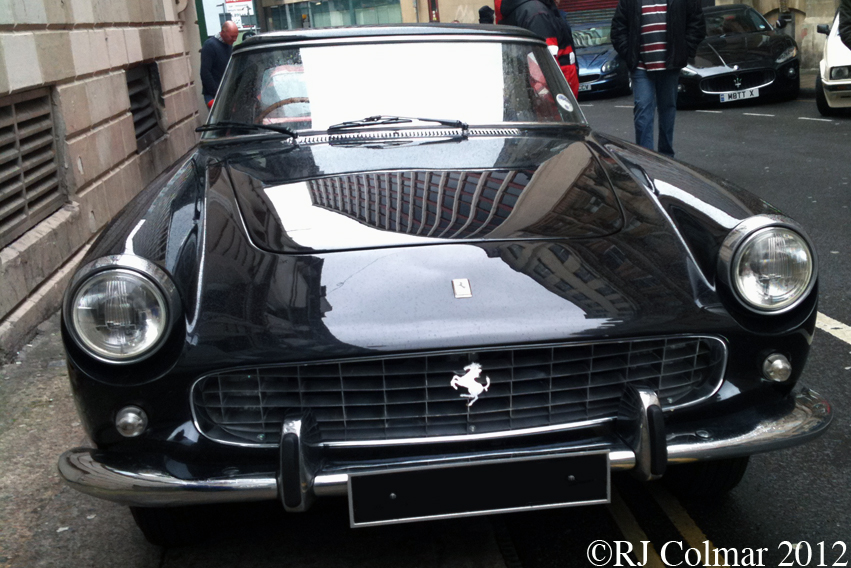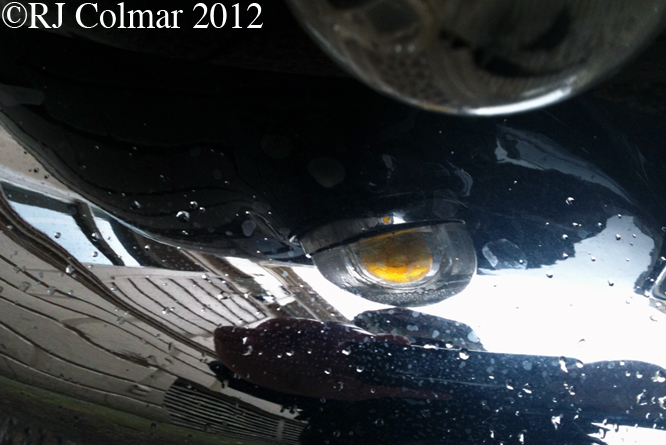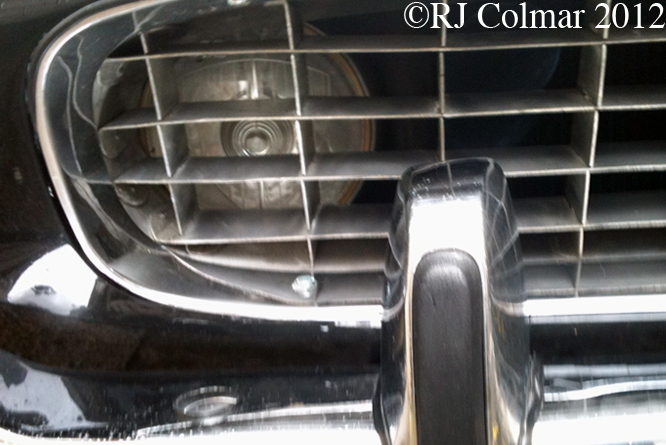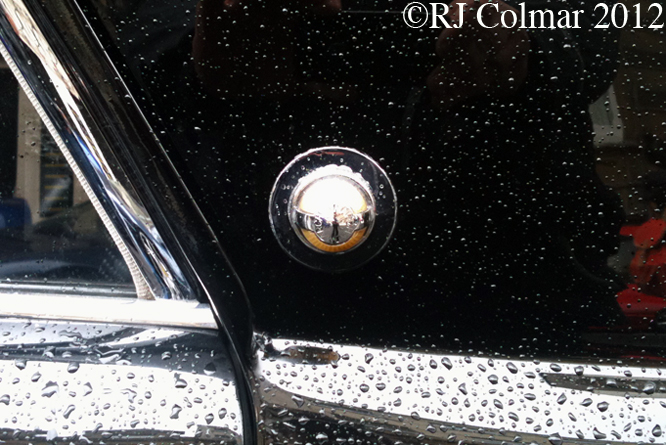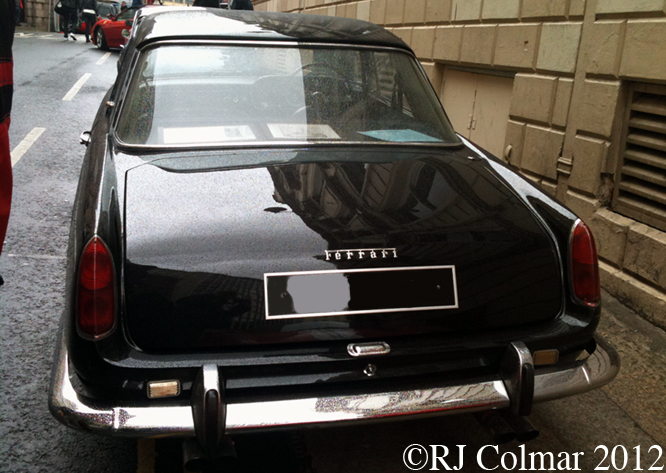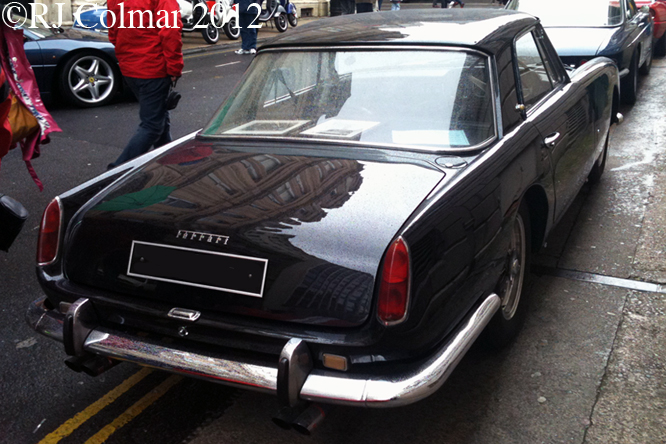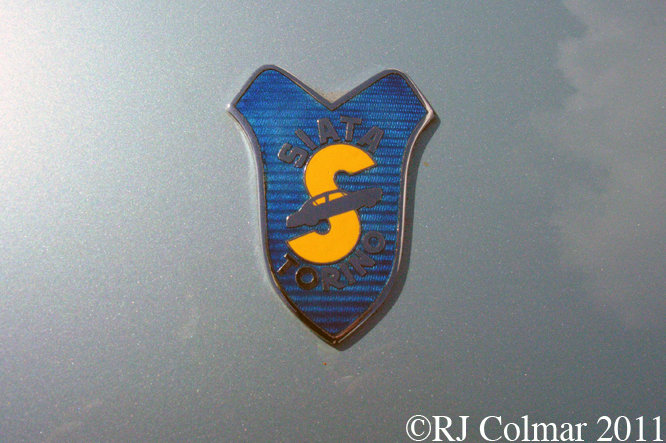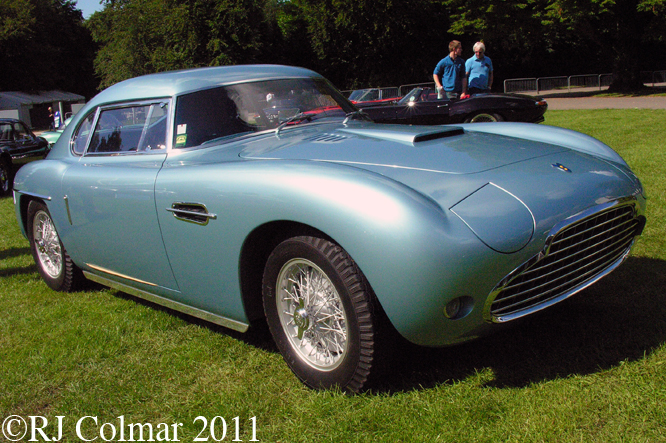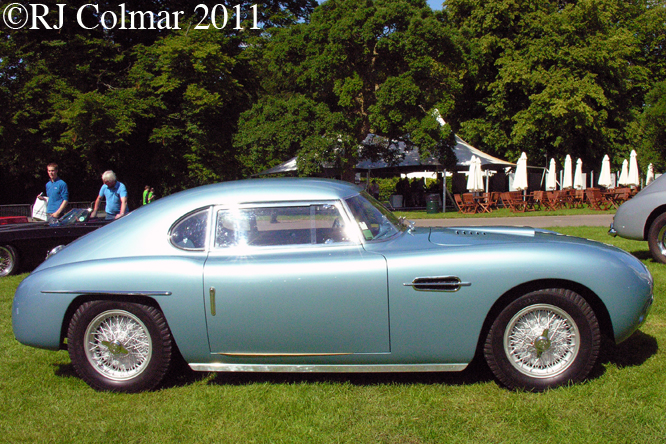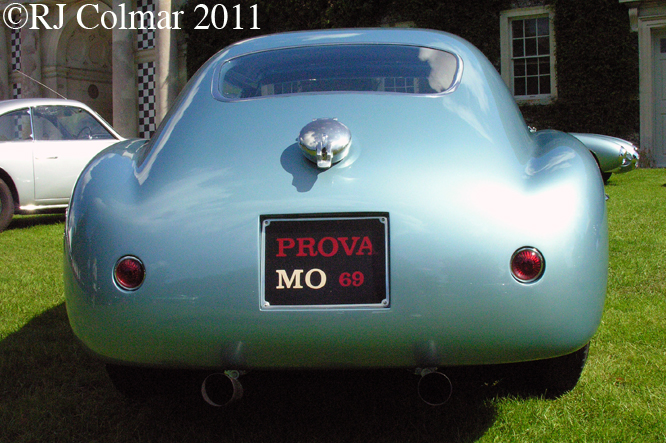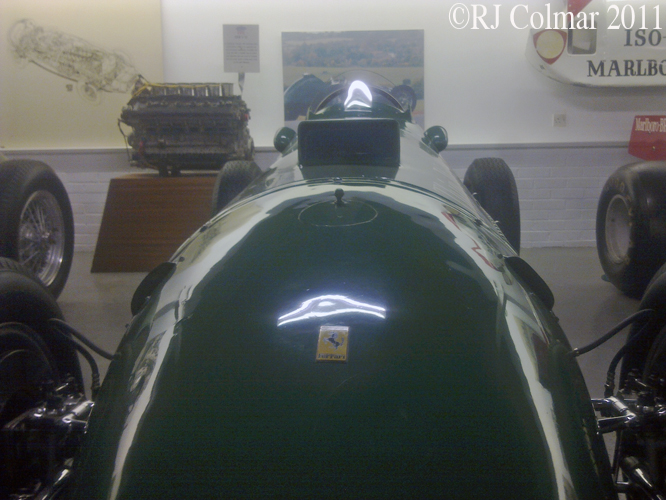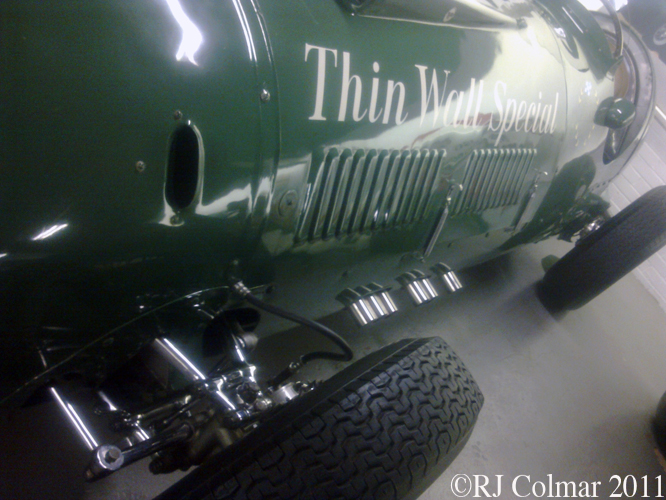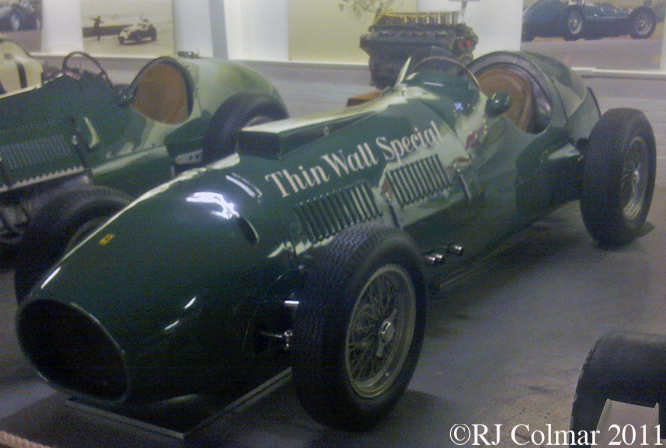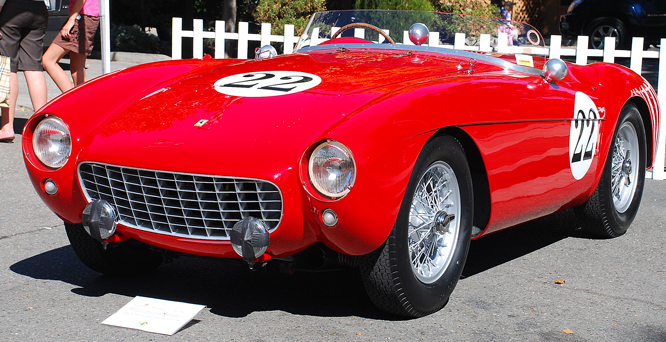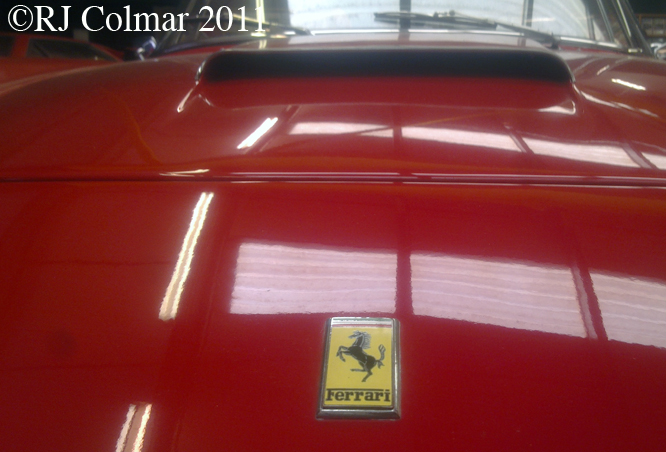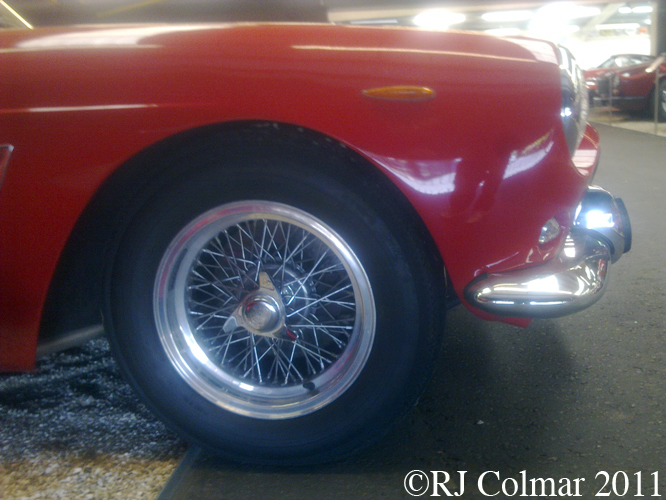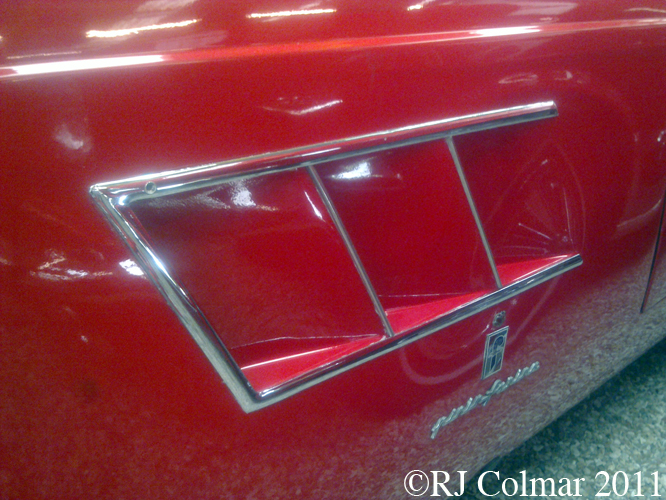Today we are looking at a one off Ferrari 375MM Vignale chassis #0286AM, seen here at the recent Phil Hill Tribute at the Peterson Museum, that for 35 years was reported as being buried in a hole in the ground.
The Vignale bodied chassis 0286AM started life as one of four from a total of 10 340 MM’s with a 4.1 litre 250 cui Lamperdi V12. However before #0286AM left the factory it’s motor was upgraded first with a 4.5 litre / 274 cui V12 which had it’s origins in the Ferrari 375 Grand Prix Car, bringing the erstwhile Vignale bodied 340 MM up to 375 MM spec, in fact today’s car is seen as the prototype 375 MM. The motor was then bored out to 4.9 litres / 299 cui to the so called 375 plus spec.
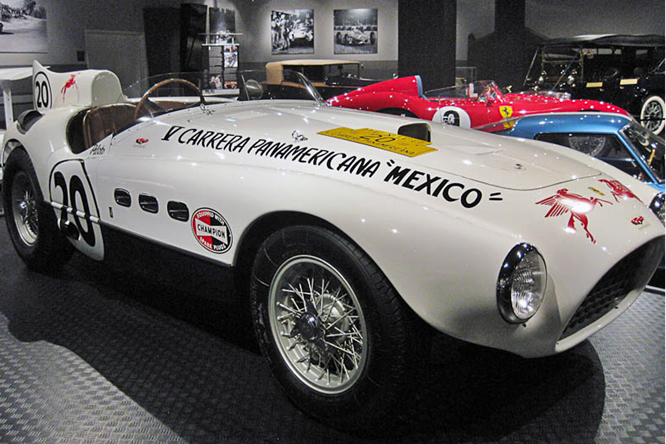
#0286AM appeared at four events in 1953, Luigi Villoresi qualified on pole for a sports car race at Spa but the car was withdrawn before the start due to engine problems. Villoresi set fastest lap in the Circuito di Senigallia Race but again retired with engine problems.
Alberto Ascari and Giuseppe Farina drove #0286AM to victory at the 1953 Nurburgring 1000 kms after the engine had been changed from one of the other team cars before the start of the race. Somewhere around this time #0286AM was scheduled to transfer to the ownership of Tony Parravano however the engine problems at the Nurburgring meant this transaction never took place and Tony was given another 375 MM chassis #0362AM.
US Ferrari importer Luigi Chinetti then bought #0286AM painted it black added a full width screen and entered it for himself and Alfonso de Portago in the 1900 mile 1953 Carrera Panamericana where engine problems prevented the car from completing the race. The car was then sold to Carlos Braniff in Mexico City.
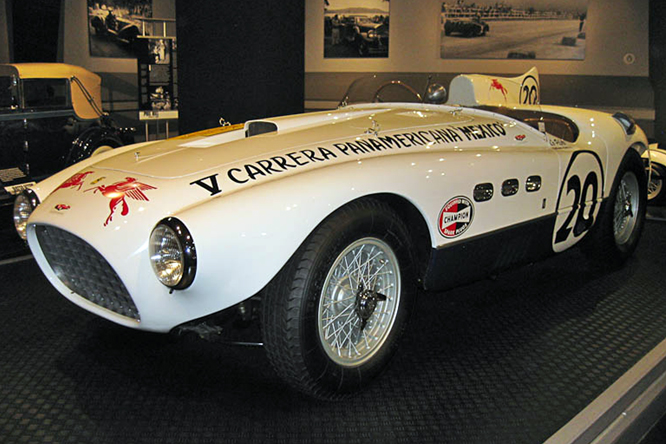
Braniff had the car prepared for the 1954 Carrera Panemericana with a standard 4.5 litre / 274 cui motor he had a second spare wheel fitted in the tail and added the distinctive head rest and fin as well as adding cooling vents for the wheels. Carlos drove the car to a second place finish at the The Lone Star National Sports Car Race held at Bergstrom and Phil Hill came second in the Orange Empire National Races held at March AFB prior to the Carrera Panemericana for which Hill was teamed up with Richie Ginther.
Hill & Ginther were in contention for the 1954 Carrera Panemericana win when they ran out of fuel on the 7th of 8 stages, on which they only managed a forth place finish. Hill & Ginther made up for the disappointment by completing the 572 mile final stage of the event, held on open roads remember, at a blistering 137 mph average to recover a 2nd place finish overall. That 137 mph average for the eighth stage of the Carrera Panamericana has never been beaten.
In 1955 Lou Buero became the owner of the car now repainted dark red / brown during the 1955 season Carrol Shelby drove the car to a victory at Torrey Pines. Lou Buero then had the head cylinder heads crack at the end of season races at Nassau and #0286AM would then go unseen in public for 39 years.
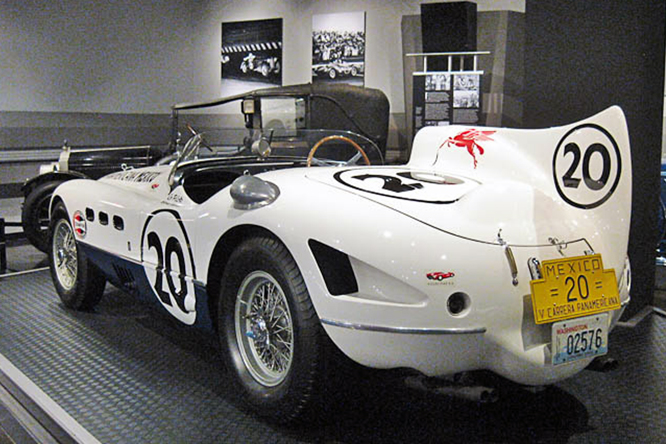
It turns out that the reports of the car being buried in the earth were just a tad far of the mark, after Lou Buero Snr passed away his son had tried to revive #0286AM by attempting to fit a Jaguar motor and gearbox, however having failed he entombed the car in a 20ft trailer barricading it in so that no one could steal it in 1956. The myth of the car being buried in the ground stemming perhaps the inevitable Chinese Whispers over the ensuing 39 years owing to the dark red / colour of the car when it was last seen and the fact that it had been entombed in a trailer.
#0286AM was in need of a ground up restoration after spending 35 years in less than ideal conditions in Arcata, California, galvanic corrosion of the steering wheel had been so bad the wood rim of the steering wheel had dropped off ! The process began in 1994 and by 1997 Phil Hill was reunited with #0286AM and he promptly drove it to victory at the Monterey Historic Automobile Races. That same year #0286AM also won the Pebble Beach Cup at the Concours d’Elegance.
My thanks to Mark Savory who was partly responsible for restoring #0286AM who’s website gives a more complete history and further photo’s of the car.
Thanks for joining me on this 137 mph edition of ‘Gettin’ a li’l psycho on tyres, I hope you will join me again tomorrow. Don’t forget to come back now !
PS Don’t forget …
Automobiliart GALPOT Seasonal Quiz
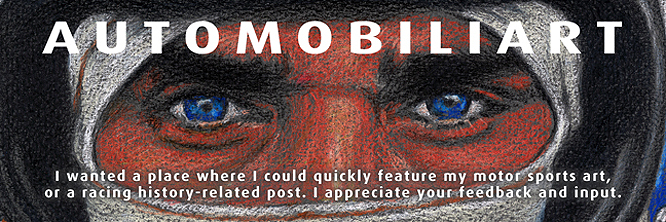
December 26th – January 2nd
Win a set of Paul Chenard Greetings Cards
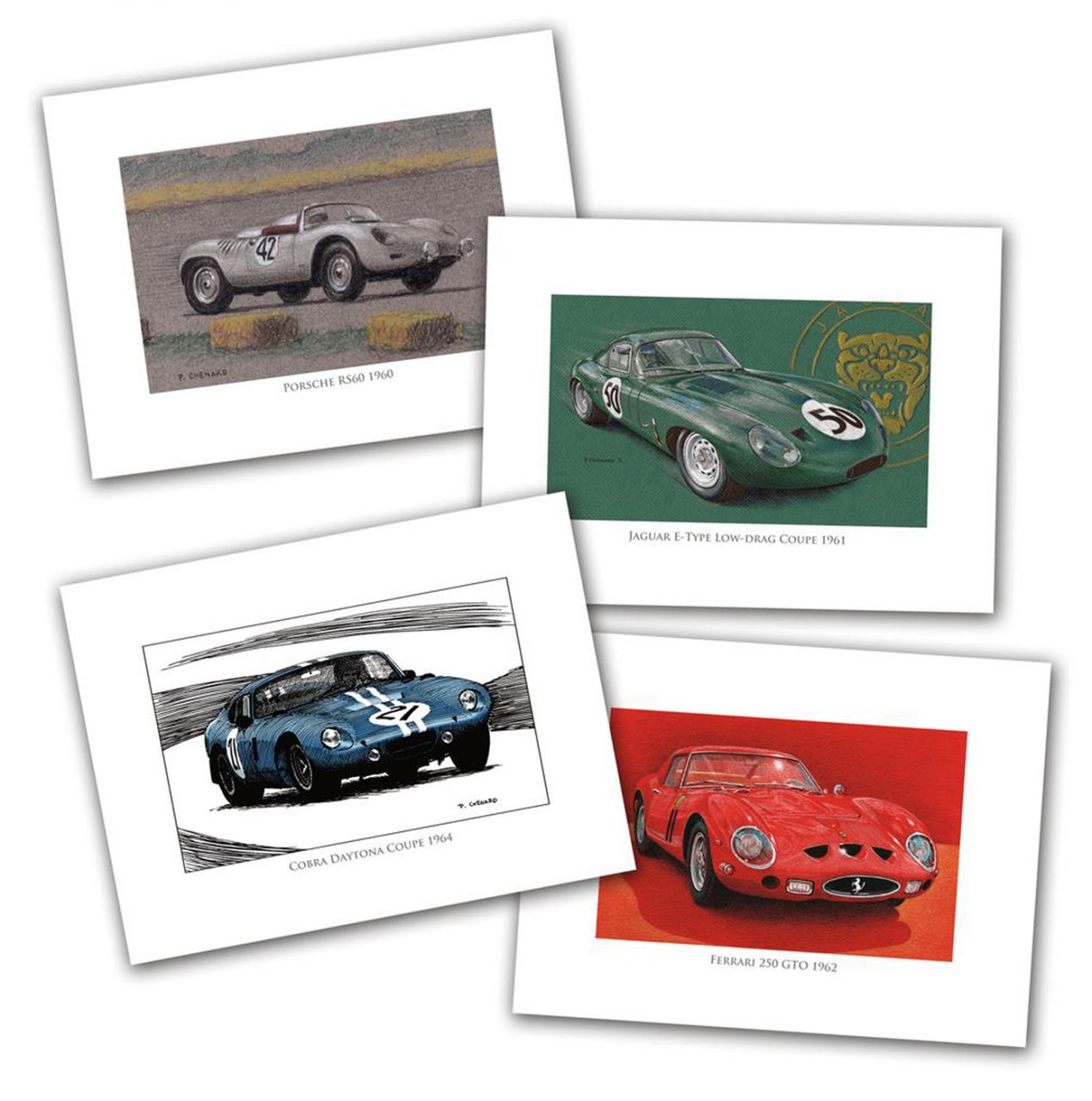
Set 1 Sports & GT Cars
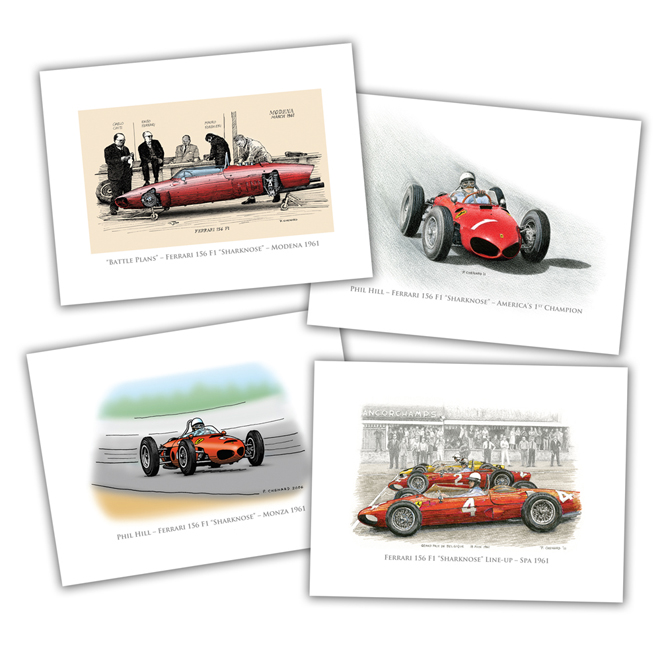
Set 2 Phil Hill World Drivers Championship 50th Anniversary Edition
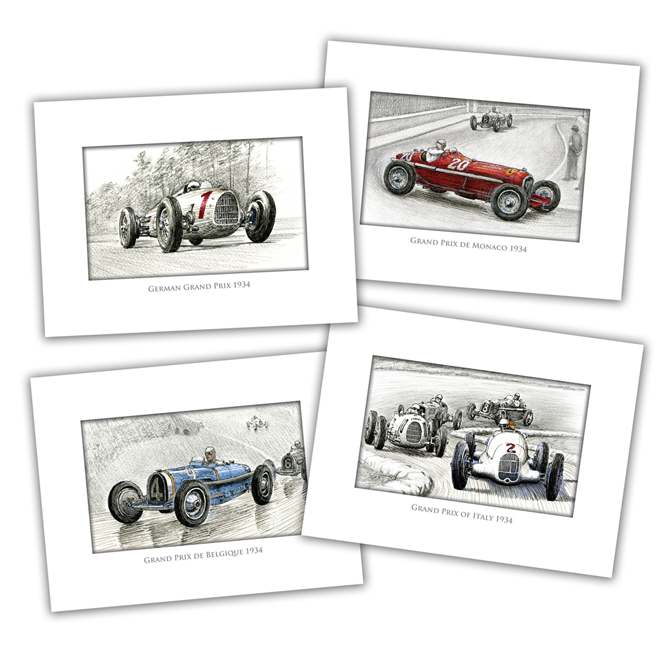
Set 3 1934 Season
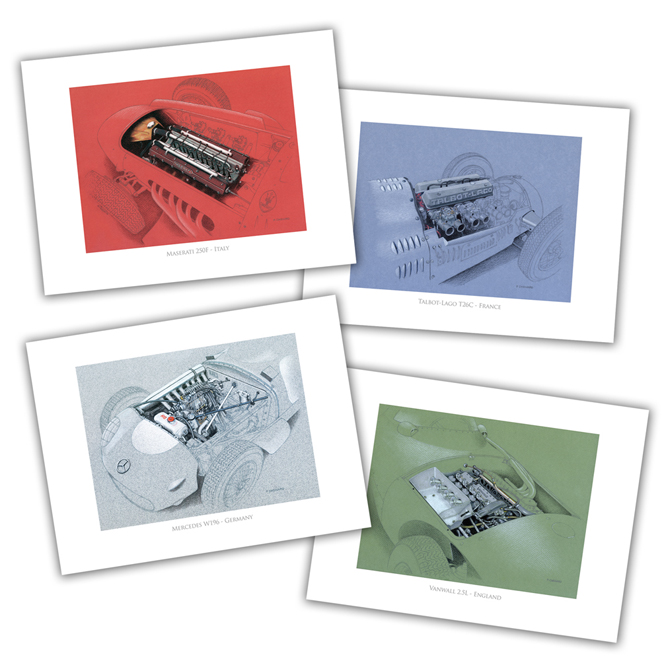
Set 4 Grand Prix Engines of the 1950’s
or
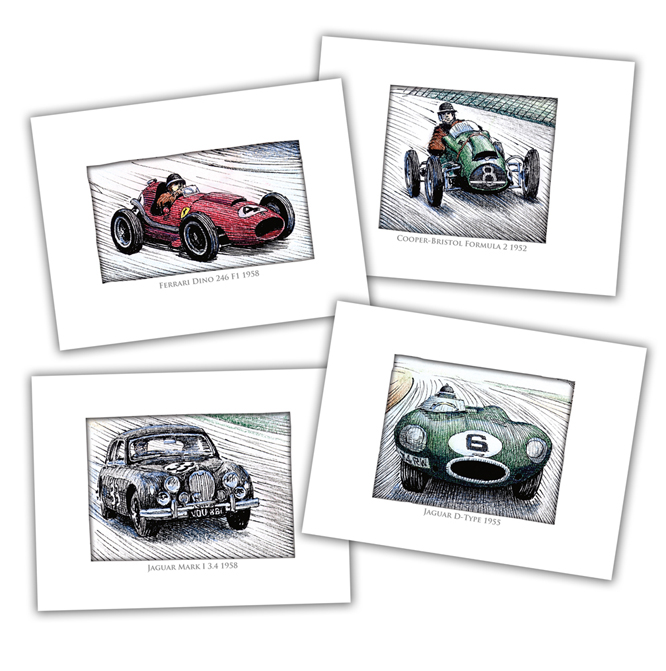
Set 5 Mike Hawthorn’s Race Cars
The Automobiliart GALPOT Seasonal Quiz will comprise 8 categories.
Overall winner chooses one set of Paul Chenard Greetings Cards from the five sets shown above.
The cards measure 15.24cm x 11.43cm, come in packs of 12 with 3 copies of 4 designs in each set, plus A6 envelopes.
Which set will you choose ?
The free to enter Automobiliart GALPOT Seasonal Quiz will run from December 26th – January 2nd Entries close January 8th 2012, Winner announced January 16th 2012.
Full details on December 26th at GALPOT.
Looking for Automotive Seasonal Gift Idea’s? Visit Automobiliart Now !


